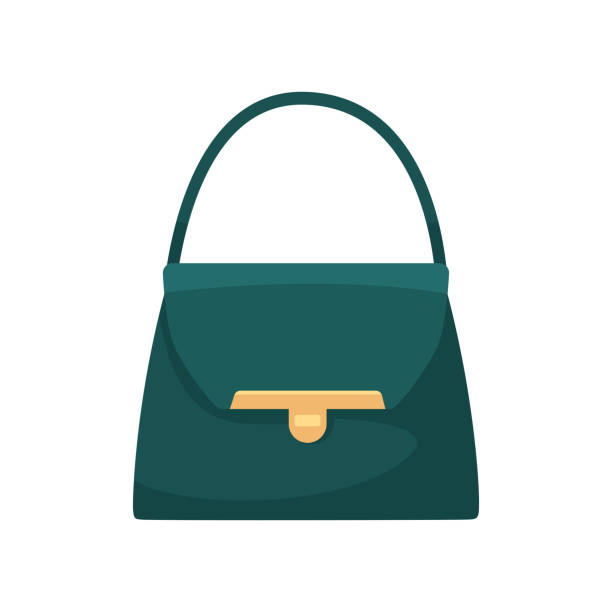
1. How to Make Women's Handbags
Design Concept
Initial Sketches: Start with sketches to visualize the design, considering the shape, size, and features like pockets, zippers, and handles.
Prototype: Create a prototype using inexpensive materials to refine the design and functionality.
Pattern Cutting
Templates: Develop precise patterns for each component of the handbag, including the body, lining, pockets, and straps.
Grainline and Markings: Ensure grainlines and markings are clear on the pattern to guide accurate cutting and assembly.
Material Selection
Fabric: Choose fabrics like leather, faux leather, canvas, or synthetic materials based on the design and intended use.
Hardware: Select high-quality zippers, clasps, buckles, and rivets to ensure durability and style.
Assembly
Cutting: Cut all pieces according to the pattern, ensuring precision for a clean finish.
Sewing: Assemble the handbag using sturdy stitching methods. Reinforce stress points to ensure longevity.
Finishing: Add finishing touches like edge painting, lining attachment, and hardware installation.
2. Personality Development
Expression of Style
Signature Designs: Develop a unique style that reflects the brand�s identity and resonates with the target audience.
Customization: Offer personalized options like monogramming, custom colors, and bespoke designs to enhance customer connection.
Functionality and Innovation
Practical Features: Incorporate features like adjustable straps, multiple compartments, and secure closures for added functionality.
Innovative Materials: Experiment with sustainable materials, recycled fabrics, and advanced textiles to attract eco-conscious consumers.
3. Types of Women's Handbags
Tote Bags
Characteristics: Large, open-top bags with parallel handles.
Use: Everyday use, shopping, and carrying essentials.
Shoulder Bags
Characteristics: Medium-sized bags with a single shoulder strap.
Use: Casual or formal settings, versatile for various occasions.
Crossbody Bags
Characteristics: Bags with a long strap worn across the body.
Use: Hands-free convenience, suitable for travel and errands.
Clutch Bags
Characteristics: Small, handheld bags without handles or straps.
Use: Evening events, parties, and formal occasions.
Satchels
Characteristics: Structured bags with top handles and often a crossbody strap.
Use: Professional settings, work, and business meetings.
4. Care for Women's Handbags
Cleaning
Regular Cleaning: Wipe down with a damp cloth and use appropriate cleaners for leather, suede, or fabric.
Deep Cleaning: Professional cleaning for stubborn stains and thorough maintenance.
Storage
Proper Storage: Store in dust bags, avoid direct sunlight, and stuff with tissue paper to maintain shape.
Avoid Overloading: Do not overload the bag to prevent stretching and damage to the handles and structure.
Maintenance
Conditioning: Regularly condition leather bags to keep them supple.
Repairs: Fix minor damages promptly, like loose stitches or broken hardware, to extend the bag�s life.
5. Pros and Cons
Good Side
Fashion Statement: Enhances personal style and complements outfits.
Practicality: Provides organization and convenience for carrying personal items.
Investment: High-quality handbags can be a long-lasting investment piece.
Bad Side
Cost: High-quality or designer handbags can be expensive.
Maintenance: Requires regular care to maintain appearance and functionality.
Wear and Tear: Frequent use can lead to wear and damage over time.
6. Pattern Cutting
Creating Patterns
Drafting: Develop basic patterns for each part of the handbag, ensuring accurate dimensions and shapes.
Adjustments: Make necessary adjustments for different sizes and styles.
Cutting Techniques
Precision: Use sharp tools and precise measurements to cut fabric accurately.
Marking: Clearly mark stitching lines, fold lines, and placement points for hardware.
7. Material Selection
Types of Materials
Leather: Offers durability and a luxurious feel. Available in various finishes like smooth, pebbled, and patent.
Faux Leather: An ethical and cost-effective alternative to genuine leather.
Canvas: Durable and versatile, suitable for casual styles.
Textiles: Includes a range of fabrics like cotton, nylon, and synthetic blends.
Choosing Materials
Quality: Select high-quality materials to ensure durability and longevity.
Aesthetics: Consider the look and feel of the material in relation to the design.
Functionality: Ensure the material suits the bag�s intended use and functionality.
8. Fashion and Design Trends
Current Trends
Sustainable Fashion: Growing demand for eco-friendly and ethically produced handbags.
Minimalism: Clean lines, neutral colors, and simple designs are popular.
Statement Pieces: Bold colors, unique shapes, and distinctive details make a fashion statement.
Design Elements
Textures and Patterns: Incorporate textures like quilting, embossing, or unique patterns for visual interest.
Versatility: Design handbags that transition seamlessly from day to night or work to casual settings.
9. Market Insights
Customer Preferences
Functionality: Customers value practical features like multiple compartments and secure closures.
Aesthetics: Style and appearance are crucial in attracting customers.
Sustainability: Increasing demand for sustainable and ethically made products.
Market Trends
Online Shopping: Growing trend towards online purchasing and direct-to-consumer brands.
Customization: Personalized and bespoke options are becoming more popular.
Luxury Market: High-end designer handbags continue to be a status symbol and investment.
Conclusion
Creating and marketing women�s handbags involves a blend of creativity, precision, and market understanding. By focusing on quality, design, and functionality, brands can create handbags that appeal to a wide range of customers and stand out in a competitive market. Attention to detail in pattern cutting, material selection, and construction ensures that each handbag not only looks great but also performs well and lasts long.